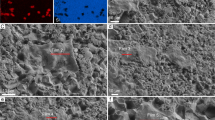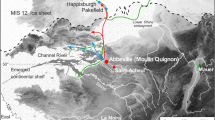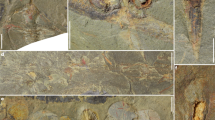Abstract
I READ with great interest the abstract of Dr. Moebius's investigations on Eozöon in NATURE,. vol. xx. pp. 272, 297, and no income origin. But how was Eozoon more doubt of its inorganic origin. But how was Eozöon formed? We find such single or ramified foraminiferæ-like or algæ like fibres or stems (Figs. 5, 9, 10, 18, 19), which show, by their irregularity, that all organic origin is excluded, sometimes in ice; they originate in the hardening together of crystals, under pressure, and are only the imprisoned, often stem-like and branded hollows of air. Like Eozöon they become afterwards filled with foreign matter, with serpentine and chrysotile, resulting out of the watery decomposition of olivine.
This is a preview of subscription content, access via your institution
Access options
Subscribe to this journal
Receive 51 print issues and online access
$199.00 per year
only $3.90 per issue
Buy this article
- Purchase on Springer Link
- Instant access to full article PDF
Prices may be subject to local taxes which are calculated during checkout
Similar content being viewed by others
Author information
Authors and Affiliations
Rights and permissions
About this article
Cite this article
KUNTZE, O. How did Eozoon Originate, and is Graphite a Proof of Organic Beings in the Laurentian Period?. Nature 20, 425–426 (1879). https://doi.org/10.1038/020425c0
Issue Date:
DOI: https://doi.org/10.1038/020425c0
Comments
By submitting a comment you agree to abide by our Terms and Community Guidelines. If you find something abusive or that does not comply with our terms or guidelines please flag it as inappropriate.



